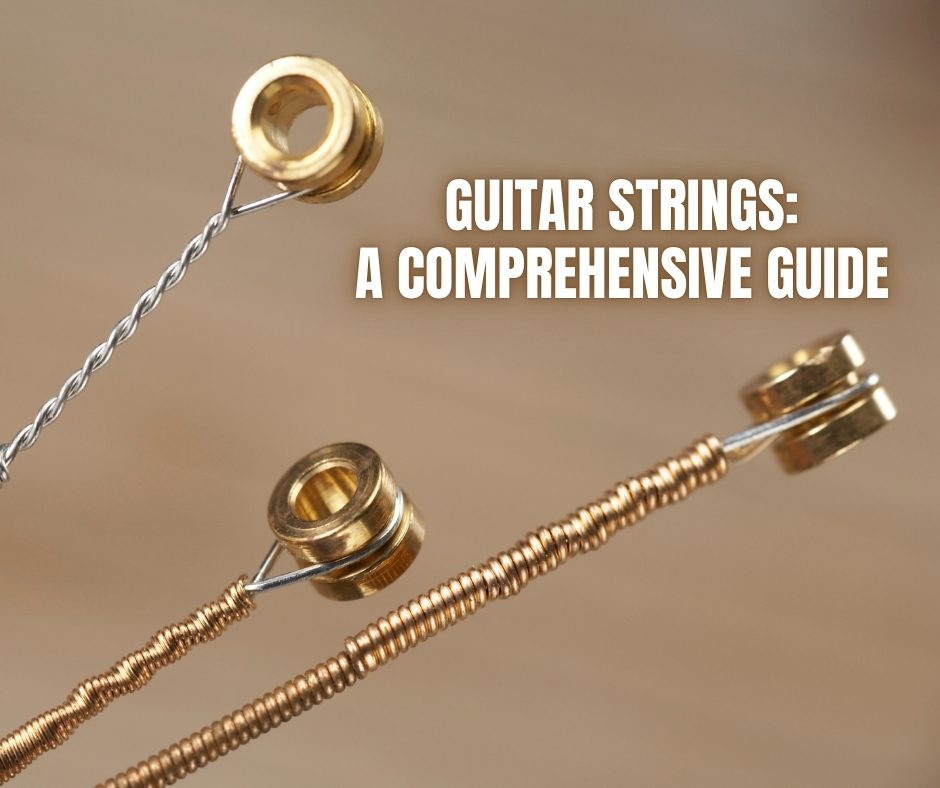When it comes to playing the guitar, strings are more than just a functional part of the instrument—they’re a critical factor in shaping your tone, playability, and overall experience. Guitar string gauges refer to the thickness of the strings, typically measured in thousandths of an inch. Whether you’re a beginner or a seasoned player, understanding string gauges can help you find the perfect setup for your playing style and musical needs.
In this post, we’ll explore what guitar string gauges are, the pros and cons of different gauges, and how to choose the best set for your instrument.
What Are Guitar String Gauges?
String gauge is a term that describes the thickness of a guitar string. For example, a string with a gauge of .010 is 0.010 inches thick. Guitar string sets are often referred to by the gauge of the thinnest string (the high E string). Common gauges include:
• Light: .008–.010
• Medium: .011–.013
• Heavy: .014 and above
Each set has varying gauges for the other five strings, but the high E gauge serves as the reference point.
Light Gauge Strings
Advantages
• Easier to Play: Ideal for beginners or those with lower finger strength, light strings are easier to fret, bend, and slide.
• Brighter Tone: Light strings tend to produce a crisp and bright sound.
• Suitable for Lead Playing: Their flexibility makes them great for soloing and intricate techniques like hammer-ons and pull-offs.
Disadvantages
• Lower Volume: They may lack the projection of heavier strings, especially on acoustic guitars.
• Less Sustain: The thinner gauge can result in shorter sustain.
• Prone to Breaking: Light strings are less durable and can break more easily with aggressive playing.
Medium Gauge Strings
Advantages
• Balanced Tone: Medium strings offer a good compromise between brightness and warmth.
• Greater Versatility: These strings suit various playing styles, from strumming chords to playing leads.
• Moderate Durability: They strike a balance between ease of play and strength.
Disadvantages
• Moderate Effort Required: While not as stiff as heavy strings, medium strings require more finger strength compared to light gauges.
• Not Ideal for Extreme Bending: Players who rely heavily on bending may find them less suitable.
Heavy Gauge Strings
Advantages
• Rich, Full Tone: Heavy strings excel in delivering warm, resonant sounds with deep bass and smooth mids.
• Greater Volume and Sustain: Ideal for acoustic guitars and powerful electric guitar riffs.
• Stability in Drop Tunings: For genres like metal and rock that use lower tunings, heavier strings maintain tension and tuning stability.
Disadvantages
• Challenging to Play: These strings require strong fingers and are less forgiving for beginners.
• Harder on the Guitar: The increased tension can strain the guitar neck, especially on vintage instruments.
Choosing the Right Gauge for Your Style
The ideal string gauge depends on several factors:
1. Playing Style:
• If you’re a lead guitarist or love intricate solos, lighter gauges will facilitate bending and fast playing.
• For rhythm guitarists who prioritize rich chords, medium to heavy strings provide better tone and sustain.
2. Musical Genre:
• Blues and Jazz: Medium or heavy gauges for warm, expressive tones.
• Rock and Metal: Heavy gauges for power chords and drop tunings.
• Folk and Acoustic: Medium to heavy for a balanced tone with good projection.
3. Guitar Type:
• Acoustic guitars often benefit from medium or heavy strings to enhance volume.
• Electric guitars typically use lighter gauges for easier playability.
4. Tuning Preferences:
• Standard tuning works well with light or medium strings.
• Lower tunings like Drop D or Drop C require heavier strings to maintain tension.
Choosing the Right Gauge for Your Style
The ideal string gauge depends on several factors:
1. Playing Style:
• If you’re a lead guitarist or love intricate solos, lighter gauges will facilitate bending and fast playing.
• For rhythm guitarists who prioritize rich chords, medium to heavy strings provide better tone and sustain.
2. Musical Genre:
• Blues and Jazz: Medium or heavy gauges for warm, expressive tones.
• Rock and Metal: Heavy gauges for power chords and drop tunings.
• Folk and Acoustic: Medium to heavy for a balanced tone with good projection.
3. Guitar Type:
• Acoustic guitars often benefit from medium or heavy strings to enhance volume.
• Electric guitars typically use lighter gauges for easier playability.
4. Tuning Preferences:
• Standard tuning works well with light or medium strings.
• Lower tunings like Drop D or Drop C require heavier strings to maintain tension.
Tips for Trying Out Different Gauges
• Experiment Gradually: Start with medium gauges and experiment lighter or heavier as you discover your preferences.
• Consider Hybrid Sets: Some players use hybrid string sets that combine light and heavy gauges, such as lighter high strings for leads and heavier low strings for rhythm.
Conclusion
Guitar string gauges might seem like a small detail, but they can significantly impact your tone and playing experience. By understanding the characteristics of different gauges, you can make an informed decision that complements your musical style, guitar setup, and personal preferences. Whether you’re looking for silky bends, rich chords, or the perfect drop-tuned riff, the right string gauge can unlock your guitar’s full potential.







